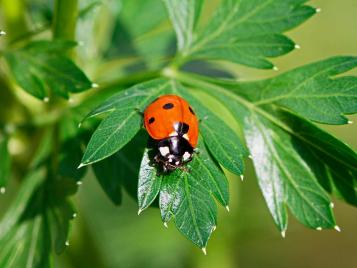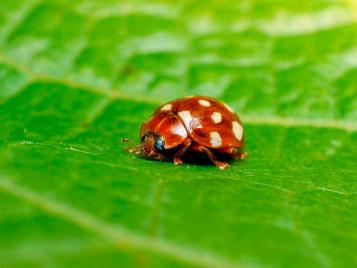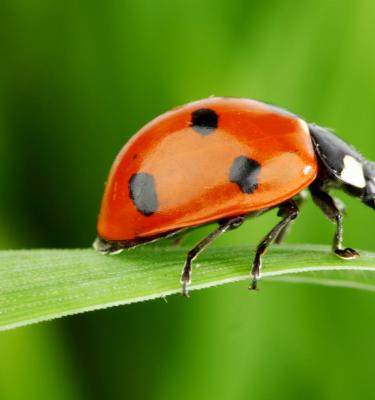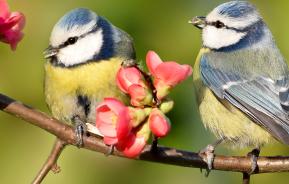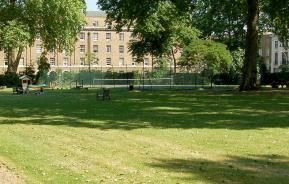Ladybird, ladybird fly away home…
We might all know at least one version of this nursery rhyme, but how much do we actually know about the tiny beetles that star in the rhyme?
Here are 11 myth busting, fascinating facts about ladybirds
- The collective name for ladybirds is the Coccinellidae, which has its origins in the Latin word coccineus meaning ‘scarlet’. The word ‘Ladybird’ is thought to have been inspired by early images of the Virgin Mary who would appear wearing a red cloak. Other colloquial names include ‘Ladybug’ (particularly common in America) and ‘Ladycow’.
- The number of spots on a ladybird indicates what species it belongs to, not, as commonly believed, how old it is. To identify the ladybird species accurately, the colour and number of spots needs to be taken into consideration.
- The most common ladybird in the UK is the 7 Spot Ladybird - which is red with, yep, you guessed it, 7 black spots.
- There are believed to be 47 different ladybird species in the UK but over 5,000 species globally.
- Not all ladybirds are red with black spots. Ladybirds can be yellow, orange, brown or red with black, white or red spots. Some even have stripes instead of spots! It is the wing cases that are coloured, the wings that they use to fly with are transparent and lie just below the hard exterior casing.
- The Harlequin Ladybird is the most invasive ladybird in the world and is rapidly killing the other species. This ladybird is particularly difficult to identify as it has many different appearances and includes black with red spots, stripes and orange with white spots.
- Ladybirds eat aphids which is why they are such a delight to have in the garden and are a natural alternative to spraying with chemicals. You can encourage more ladybirds to your green space by creating a simple ladybird hotel from a few pine cones bound together with twine or chicken wire and then positioned in a sheltered spot within the garden.
- Ladybirds hibernate (or ‘overwinter’) from October all the way through to February. Any ladybirds found in a centrally heated home should be moved to a sheltered spot outside to ensure that they complete their overwintering and don’t die in the colder (less aphid-rich) months.
- When attacked, a ladybird will give out small drops of a yellow, unpleasant tasting fluid. Birds then associate the bright colour with a bad taste and therefore leave them alone.
- An adult ladybird can live for between 1 and 3 years.
- Some female ladybirds are infected with a bacterium (spiroplasma) which kills male embryos.
